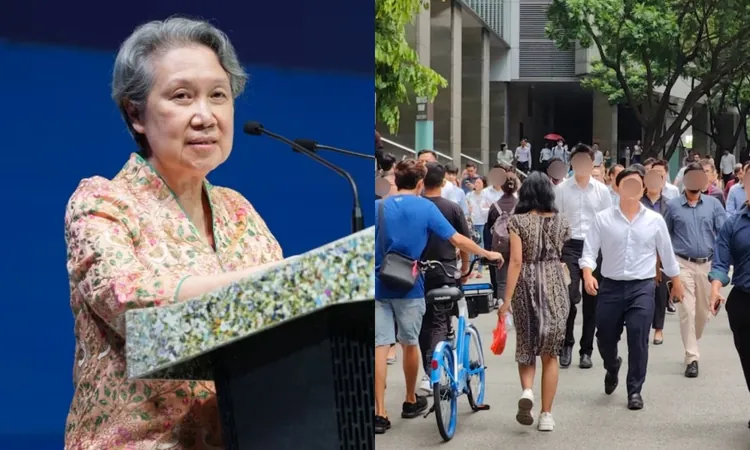
Netizens Reject Ho Ching's Ambitious Population Plans, Demand Local Family Support Instead
2024-10-02
Singapore’s Population Challenge
A surge of discontent has emerged among Singaporean netizens in response to Madam Ho Ching’s recent proposal advocating for an influx of foreign workers to address the nation’s demographic challenges. In a Facebook post dated September 27, Madam Ho—spouse of former Prime Minister Lee Hsien Loong and former CEO of Temasek Holdings—asserted that Singapore could comfortably accommodate between 8 to 10 million residents through effective urban planning.
She emphasized the urgent need for caregivers and workers in growing sectors such as construction and engineering due to the city-state's aging population and declining birth rates.
Public Backlash
Critically, netizens showed strong resistance to her vision, citing the risks of over-reliance on foreign labor, calling for more significant efforts to enhance the Total Fertility Rate (TFR) organically by supporting local families instead. Many expressed skepticism over the feasibility of accommodating a population of 10 million, describing it as "madness" that could exacerbate current living conditions.
One netizen highlighted the absence of suburbs or hinterlands in Singapore, suggesting that the city may not sustain such density without severely compromising the quality of life.
Environmental and Infrastructure Concerns
Some comments pointedly criticized the idea of merely planting more trees in urban areas to offset environmental degradation, arguing that such measures cannot replace the lost natural habitats.
Amid this thread of discussion, concerns were raised about the future of National Service and what it would mean for local defense capabilities in a potentially foreign-dominated population landscape.
Questions about the implications for citizenship and social stability were echoed by other commenters, who linked the growing influx of foreign workers to rising property prices, thereby putting local residents under increasing financial strain.
Technological Solutions
On a constructive note, some users suggested leveraging technology to mitigate labor shortages, such as utilizing artificial intelligence and robotics to fill gaps in the workforce. This could not only alleviate the dependence on foreign labor but also streamline operations across various sectors.
Need for Transparency
Moreover, many voices in the discussion called for transparency in immigration policies, emphasizing the need for public forums to discuss the long-term impacts of sustained immigration on Singapore’s social fabric and economy.
Ongoing Issues
These discussions come at a time when the nation is grappling with other pressing issues, including a spate of incidents affecting public transport services. Notably, a recent train derailment raised alarms over the reliability and safety of Singapore's public transport infrastructure, prompting calls from netizens for comprehensive reviews of safety inspections and maintenance protocols.
Conclusion
In conclusion, the debate over Ho Ching's proposition showcases the delicate balance Singapore must strike between welcoming foreign talents and nurturing a robust local population. As the discourse continues, it is clear that many citizens desire a future focused on sustainable growth that prioritizes local family support and community building.




 Brasil (PT)
Brasil (PT)
 Canada (EN)
Canada (EN)
 Chile (ES)
Chile (ES)
 España (ES)
España (ES)
 France (FR)
France (FR)
 Hong Kong (EN)
Hong Kong (EN)
 Italia (IT)
Italia (IT)
 日本 (JA)
日本 (JA)
 Magyarország (HU)
Magyarország (HU)
 Norge (NO)
Norge (NO)
 Polska (PL)
Polska (PL)
 Schweiz (DE)
Schweiz (DE)
 Singapore (EN)
Singapore (EN)
 Sverige (SV)
Sverige (SV)
 Suomi (FI)
Suomi (FI)
 Türkiye (TR)
Türkiye (TR)